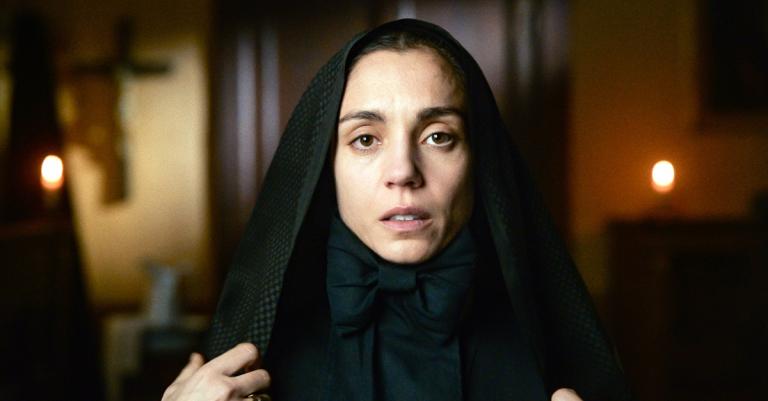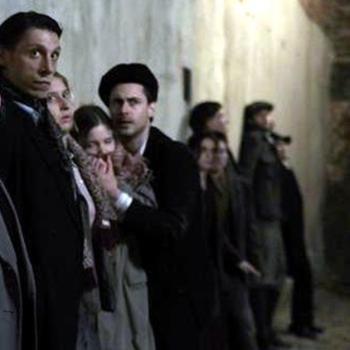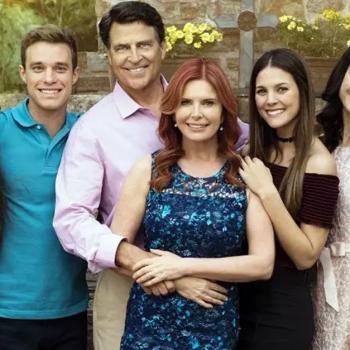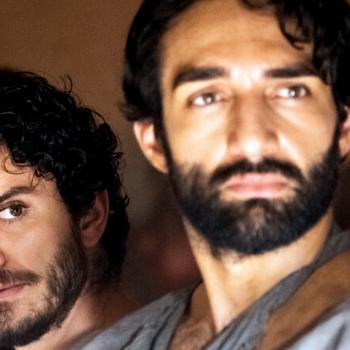Cabrini is a movie about a Catholic saint. You might be forgiven for not realizing that as you’re watching it — unless you can read between the lines.
In an interview with me, director Alejandro Monteverde says, “The works of mercy are in the film. Look, her life is a prayer. So you want to pray, just watch her life. Do 1% of that. That’s her life. It’s show, don’t tell.”
More on that later.
What is Cabrini About?
In theaters on March 8 — International Women’s Day, and yes, that’s intentional — the new film from Monteverde (Bella, Little Boy, Sound of Freedom) is a biopic of Mother Francesca Cabrini (1850-1917).
She was an Italian-born Catholic religious sister who came to America and battled prejudice against Italians, Catholics, immigrants and women in general to found a vast network of orphanages, hospitals and more. She became a canonized saint in 1946.
The film is gorgeous to look at, filmed in a dramatic, even operatic style. As Mother Cabrini, Italian actress Cristiana Dell’Anna is soulful and superb. Her supporting cast includes stellar American actors David Morse (St. Elsewhere), as New York’s Archbishop Corrigan, and John Lithgow as Mayor Gould, along with Italian legend Giancarlo Giannini as Pope Leo XIII.
Cabrini Gets the Big Push
Distributor Angel Studios is using the pay-it-forward model that helped boost the impressive box-office results of Sound of Freedom. Angel has also rolled out (as it did with The Chosen) an impressive line of Cabrini merchandise, including Rosaries, jewelry, mugs, hoodies, tees and books.
Andrea Bocelli has released a new single for the film, called Dare to Be, recorded with his daughter Virginia (who makes her acting debut as Aria in the film).
This is the most mainstream push I’ve ever seen for a movie about a Catholic saint — but that’s not necessarily the focus of the film. As its release date indicates, it’s much more a film about a strong woman (strong mentally and spiritually, not physically) battling overwhelming odds in order to do what’s right.
The fact that she did this in service of Christ and her vocation is … more implicit than explicit. Upfront, this is the story of one small woman, in perpetually frail health, fighting a system rigged against her. And that was intentional on the part of Monteverde.
The Director Explains Why He Did Cabrini, and Why He Did It the Way He Did
Monteverde says:
By the time I finished the screenplay, I knew I was going to make the movie, and I knew that I wanted to make it in the most cinematic way, because my job as a director was going to be to break any prejudices that come with the character.
She’s a hero. She even wears a cape. So, it’s a heroic story. It’s the ultimate underdog story. It was also an opportunity to celebrate the power of the woman’s voice. She came here as an immigrant with nothing, and built an empire as big as the Rockefellers. But not an empire for her, an empire for others, an empire for those without dignity.
And she had to fight all day long, fight all these institutions that were controlled and run by men. She had to fight pimps. And in many cases, she had to fight death itself. She was fighting her own mortality.
Monteverde also wants to open up the story to emphasize more universal themes.
It’s a film that is not for one audience, it’s for everybody. It’s a universal story. This is a movie about a woman that happens to be a nun, a woman that happens to be the first American saint, but she’s a woman and she is very proud to be a woman.
And she built an empire with women, but she was also an immigrant woman. And that’s where I also connected with her.
She came to this country with nothing but just a couple of suitcases. And she was the first woman to lead a mission outside, an overseas mission, without the leadership of a man. And look what she built.
So, Where’s the Catholicism in This Story About a Saint?
Several reviewers have noticed — and I noticed — that, for a film about a Catholic religious sister and saint, Cabrini is light on overt expressions of the Catholic faith. I also asked Mexican-born Monteverde (who is Catholic) about this.
Frankly, he bristles a bit at the question, saying:
We did a screening for 1,600 nuns, 400 priests, Cardinal Burke, in Rome, with a standing ovation. And not one single person said what you’re mentioning.
Now, I’ve done screenings for large Catholic communities, and I get one or two texts mentioning what you mentioned. And those are the complainers, that I say, “Well, thank God I’m not making a movie for you.”
If you see an American soldier dying in war, you don’t need to hear, to say, “I love my country,” if you’re seeing him dying for his country.
So if you see a nun in a church seated all night, what does she do all night in the church? Do you need more than that? Do we need her praying all night? Or if she says a line like this, when was the last time you heard a line like this in mainstream cinema? Because this is for mainstream:
“I can do all things in Him who strengthens me.”
When? Tell me one movie. And so if somebody’s not seeing that, is watching the movie with a different eye, and definitely, I say, “Look, be part of the solution. Because if that’s the criticism, then you’re seeing the wrong movie.”
Monteverde says he wants to expand the tent for a movie about a person of faith.
I knew exactly the movie I wanted to make, and I don’t like to make movies to preach to the choir. Those people are already going to church. OK, go.
So I like to make movies that bring people together, and the problem is that the minute we think we live in a bubble, that’s when we kind of exclude everybody else. And Cabrini didn’t do that. She’s a saint.
Cabrini and The Gilded Age: Women of Late 19th-Century New York
Cabrini is a beautiful-looking movie about a compelling personality who achieved the seemingly impossible. Only time will tell if it gets outside the faith-based core audience — or even outside the Catholic audience to other Christians (sometimes a bigger challenge than appealing to the mainstream).
To be honest, some of the dialogue in Cabrini is ham-handed, with men saying things directly to Mother Cabrini that I’m not sure a respectable 19th-century man would have said to the face of a respectable woman, nun or not. But I’m happy to have experts in the time period prove me wrong.
Cabrini also offers an interesting counterpoint to HBO’s The Gilded Age, which takes place in New York City at roughly the same time.
Julian Fellowes’ elegant drama moves among the elite of Gotham society in the upper reaches of Manhattan, while Cabrini spends much of its time in lower Manhattan in the Five Points, a rough slum already made famous in Martin Scorsese’s Gangs of New York.
But, if The Gilded Age’s tough-minded society dame Agnes van Rhijn (Christine Baranski) and bold society upstart Bertha Russell (Carrie Coon) ever met Mother Cabrini, they would have encountered a kindred spirit … if one animated by faith and the love of humanity, rather than ambition or social standing.
Image: Cristiana Dell’Anna as Mother Cabrini in ‘Cabrini’/PHOTO: Angel Studios
Don’t miss a thing: Subscribe to all that I write at Authory.com/KateOHare.


















